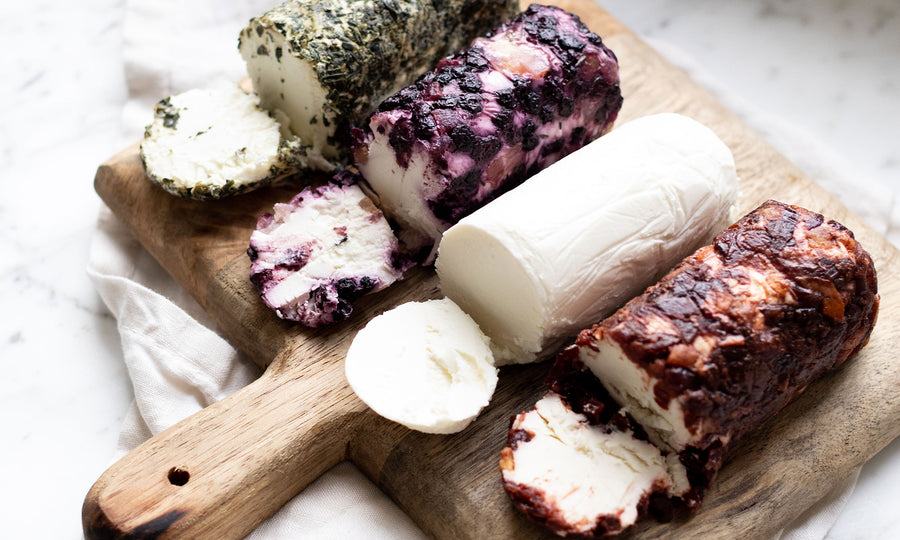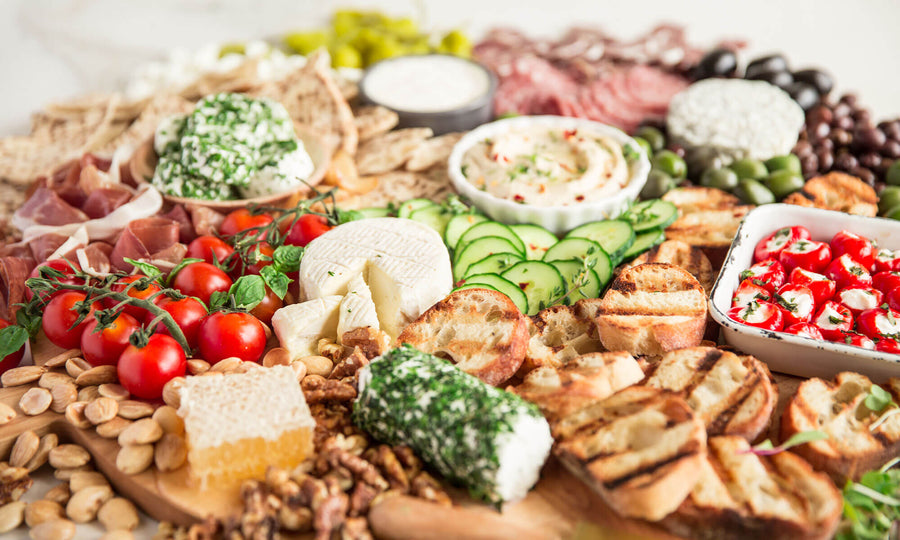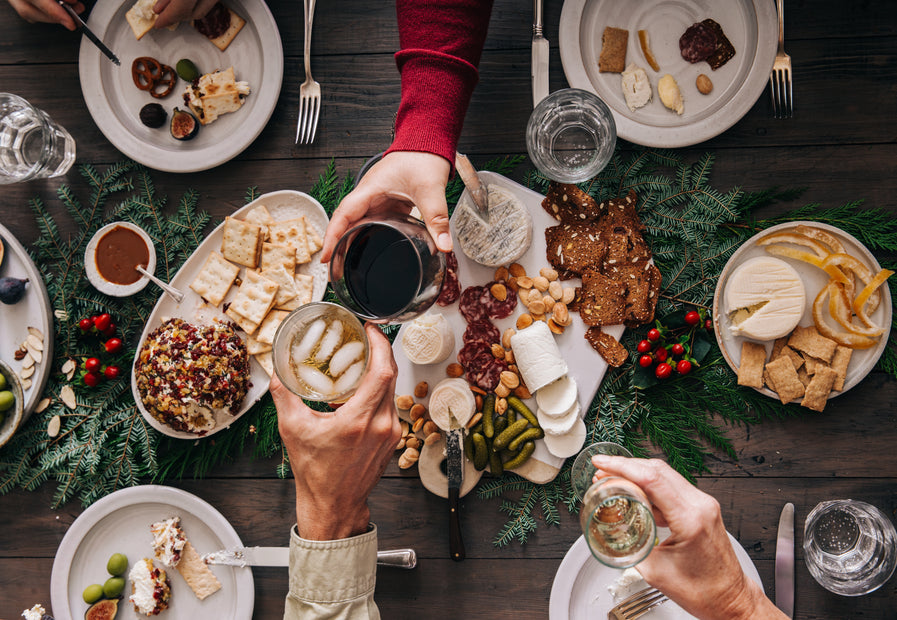If you’re like me, you’ve done some serious baking, snacking and a bit of pantry stocking in the past month; now things have started to settle in (aka, you’ve eaten all of your impulse snack buys). So, what happens when you’re left with a pantry of essentials but nothing obvious to make all your meals and perhaps starting to get hangry like me?
The truth is, when you have limited access to the grocery store or aren’t able to get every item you normally pick up, it takes a little bit of planning and creativity to stretch what you have. We’re all shopping a little differently right now, to help stay home for longer stretches of time. Never fear, we’re here to help talk through some simple things you can do to stretch your ingredients and set you up for a bit more kitchen confidence in these challenging times.
Make a grocery list.
My number one tip that I know so many of us already do is to make a grocery list. This past week I went so far as to organize my list based on where everything is in the store. I grouped all the fruit and produce together, all the meat, canned goods and nonperishables, then dry goods, and finally dairy and eggs. Read through your list before you walk into the store, but don’t get held up checking every single item off of it. Your local store may be out of potatoes or eggs but it’s okay. Pick up what you know you and your family will eat, and maybe try to snag something similar. The point is you’re opening yourself up to meal option ingredients that give you options to work with.
Once you’re home, it’s time to take stock of what you purchased and make a meal plan that maximizes ingredient efficiency. The process is sort of like threading meals together – it’s not a new idea, chefs and home cooks do it on the regular to make food stretch, move through their produce in a timely fashion, and keep waste minimal. Basically, you take one or a few items from one meal and use it in part of your next meal. I highly recommend following Lucinda Scala Quinn’s Instagram page because she is a master at cooking in this efficient way and the more examples you see of this, the more intuitive it will become in your own cooking.
Plan ahead.
Here’s an example of the meal prep we did in my house last week: I made bibimbap on Sunday for dinner last week, which is basically a bowl of rice, topped with assorted and seasoned saut?ed vegetables, a bit of ground beef and a soft cooked egg with some gochujang. I like doing the biggest and most complicated dinner on Sunday because it’s when I have the most time and energy to cook, I made extra rice, prepped a few extra vegetables and reserved two portions of the cooked beef. For Monday night's dinner, I made a quick veggie fried rice from the leftover rice and precooked vegetables. Tuesday night was taco bowls with black beans, leftover rice and beef, and saut?ed peppers and onions. On Wednesday night, I made quesadillas from the last of the black beans and beef, extra peppers and onions from Tuesday night. In total we had four generous dinners for three people from one batch of rice, one pound of beef, and some veggies. The prep was primarily on Sunday, and the three weeknight dinners came together in under 10-15 minutes.
This method of cooking mostly relies on a bit of extra food prep and planning at the start of your week but can be really helpful on weeknights when energy is low and time is tight – I see you parents who are working all day AND taking care of kids.
Reduce food waste.
We’re also taking a page right out of the way restaurants approach and handle their resources, recommending that you always eat the oldest thing in your kitchen first, it reduces food waste and limits excess trips to the store. It’s not always the most glamorous reheat, but sometimes you can tweak something old and make it feel a bit newer. I think my favorite thing to do with old veggies that were in something else is to turn it into fried rice or a taco bowl – which are always a delicious treat. If you have leftover ends of bread from all that sourdough bread baking you did, turn it into croutons for soup/salad/snacking or breadcrumbs, or toast thin slices of it and make a bit of bruschetta.
Now is a wonderful time to experiment and get creative in the kitchen. Who knows what new tastes and combinations you’ll come up with that will become the new family fave? And if you ever get stuck, hit me up for some food ideas – “what’s for dinner” is my favorite game to play.

Stretch Your Protein
If you don't make the protein the center of your meal, a little bit can go a long way. Take a portion of beef or protein of your choice, and stretch it across a few meals. And as an added bonus, it makes meal prep for the next few dinners even faster.
- Beef Bibimbap
- Veggie fried rice
- Taco bowls
- Beef & vegetable quesadillas

Tip to Tail Cooking
Get a bone-in chicken, or some chicken breasts and thighs with the bone in and use the bones and vegetable scraps to make chicken stock for soups or to enhance your rice or grains. These cuts of meat are typically less expensive than if you only purchased a package of chicken breasts and they'll give you a boost towards your next meal.
- Roasted Chicken with roasted root vegetables
- Chicken curry on rice
- Chicken salad
- Chicken and rice soup – make chicken broth (from the veggie scraps and chicken bones), add some veggies and leftover rice.

One Pot Wonders
Turn a double batch of dinner from one night into 2-3 easy dinners for the week. Make a batch of turkey or bean chili and use it as the base for stuffed peppers with rice, to top a baked potato or give extra heft to a batch of mac and cheese. Our favorite late night treat is to spoon it on tortilla chips, top with cheese and make nachos.
- Turkey chili
- Stuffed peppers
- Chili baked potatoes
- Chili mac & cheese
- Chili nachos

No Meat? No Problem.
Don't feel the need to rely on meat as a way to stretch ingredients across a few meals. A quick pan of roasted tofu and sauteed or roasted veggies will go a long way too.
- Tofu with Sautéed kale or leafy green vegetables
- Twice baked potatoes with sautéed kale and cheese
- Veggie sandwiches with roasted vegetables, tofu & bbq sauce
- Stir fried tofu with vegetables & quinoa

Make a Lot With a Little
Looking for something to feed your hungry crew? These are our some of our favorite types of dishes to look for when volume is key.
- Pantry pasta – toss in a bit of cheese, sautéed vegetables, a bit of protein from legumes, eggs, or meat - and we’re on board.
- Soups – the temperatures may be rising as spring warms up but we’re always on board for a restorative broth. It's also an easy and efficent way to use any scraps of veggie or meat bones that are lingering in your fridge and need to be used up.
- Rice and beans – a classic that never goes out of style. Feel free to swap the rice for any ancient grain you have on hand and any beans, canned or dried, or legumes will work in a pinch.




